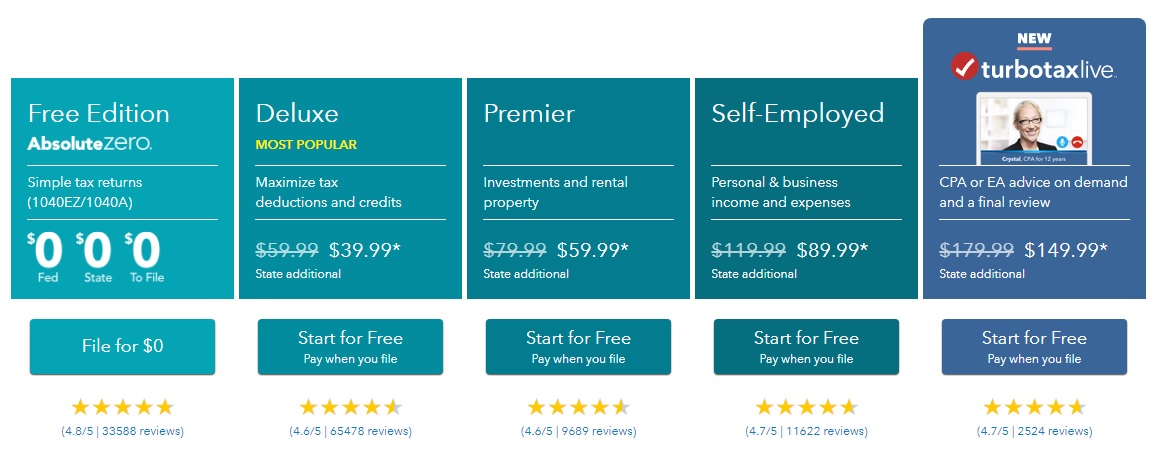
The TCJA also changed tax brackets, rates, and many other provisions that will affect each person differently. While the new higher standard deduction and removal of dependent and personal exemptions are two major changes of tax reform, these alone won’t necessarily determine whether you’ll pay more or less in taxes. The way that these changes affect taxpayers depends on their specific tax situation. Additionally, tax reform has eliminated exemptions that taxpayers claim for themselves and their dependents. Under the Tax Cuts and Jobs Act (TCJA), the new standard deductions are nearly double the previous amounts. page 749, provides an optional safe harbor method for eligible taxpayers to deduct theft losses from criminally fraudulent investment arrangements that take the form of "Ponzi" schemesįor federal purposes, you can no longer claim an itemized deduction for job expenses and certain miscellaneous deductions that were subject to the 2 percent of FAGI limitation.Editor’s Note: This article was originally published on April 9, 2018.page 849, Theft losses from fraudulent investment arrangements.IRS Revenue Ruling 2009-9, Tax Treatment of Losses.
 IRS Publication 4895 (10/11), Tax Treatment of Property Acquired From a Decedent Dying in 2010. 2017 Federal Form 8582, Passive Activity Loss Limitations, and its instructions. 2017 Federal Form 8829, Expenses for Business Use of Your Home, and its instructions. IRS Publication 551 (12/18), Basis of Assets, page 7, Basis other than cost. 2017 Federal Form 4797, Sales of Business Property, and its instructions (information for partners and shareholders). 2017 IRS Publication 523, Selling Your Home, main home destroyed. page 5, Figuring a Loss, including information on leased property or loss of inventory. page 3, Special Procedure for Damage from Corrosive Drywall and Special Provision for Damage from Deteriorating Concrete Foundation. 2017 IRS Publication 547, Casualties, Disasters, and Thefts:. However, for a casualty loss that is the result of certain federally declared disasters (Form IT-196, line 37), see Other miscellaneous deductions, below. For New York purposes (Form IT-196, line 20), you can claim casualty and theft losses. Note: The information in the links below should be used in addition to the 2021 Form IT-196, New York Resident, Nonresident, and Part-Year Resident Itemized Deductions, and its instructions.įor federal purposes, you can no longer claim an itemized deduction for a casualty or theft loss unless it is the result of a federally declared disaster. In addition, we provide links to specific current and prior year Internal Revenue Service (IRS) forms and publications to help you compute your New York itemized deductions. We briefly describe the difference between federal and New York State itemized deduction rules below. For certain New York itemized deduction computations, the instructions for Form IT-196 may refer you to this webpage for additional information or instruction. New York State itemized deductions are reported on Form IT-196, New York Resident, Nonresident, and Part-Year Resident Itemized Deductions.
IRS Publication 4895 (10/11), Tax Treatment of Property Acquired From a Decedent Dying in 2010. 2017 Federal Form 8582, Passive Activity Loss Limitations, and its instructions. 2017 Federal Form 8829, Expenses for Business Use of Your Home, and its instructions. IRS Publication 551 (12/18), Basis of Assets, page 7, Basis other than cost. 2017 Federal Form 4797, Sales of Business Property, and its instructions (information for partners and shareholders). 2017 IRS Publication 523, Selling Your Home, main home destroyed. page 5, Figuring a Loss, including information on leased property or loss of inventory. page 3, Special Procedure for Damage from Corrosive Drywall and Special Provision for Damage from Deteriorating Concrete Foundation. 2017 IRS Publication 547, Casualties, Disasters, and Thefts:. However, for a casualty loss that is the result of certain federally declared disasters (Form IT-196, line 37), see Other miscellaneous deductions, below. For New York purposes (Form IT-196, line 20), you can claim casualty and theft losses. Note: The information in the links below should be used in addition to the 2021 Form IT-196, New York Resident, Nonresident, and Part-Year Resident Itemized Deductions, and its instructions.įor federal purposes, you can no longer claim an itemized deduction for a casualty or theft loss unless it is the result of a federally declared disaster. In addition, we provide links to specific current and prior year Internal Revenue Service (IRS) forms and publications to help you compute your New York itemized deductions. We briefly describe the difference between federal and New York State itemized deduction rules below. For certain New York itemized deduction computations, the instructions for Form IT-196 may refer you to this webpage for additional information or instruction. New York State itemized deductions are reported on Form IT-196, New York Resident, Nonresident, and Part-Year Resident Itemized Deductions. 
#Turbotax return not changing with standard deduction code#
In general, your New York itemized deductions are computed using the federal rules as they existed prior to the changes made to the Internal Revenue Code (IRC) by the Tax Cuts and Jobs Act (Public Law 115-97).

See TSB-M-18(6)I, New York State Decouples from Certain Personal Income Tax Internal Revenue Code (IRC) Changes for 2018 and after, for more information on this change. Beginning with tax year 2018, the Tax Law allows you to itemize your deductions for New York State income tax purposes whether or not you itemized your deductions on your federal income tax return.







 0 kommentar(er)
0 kommentar(er)
